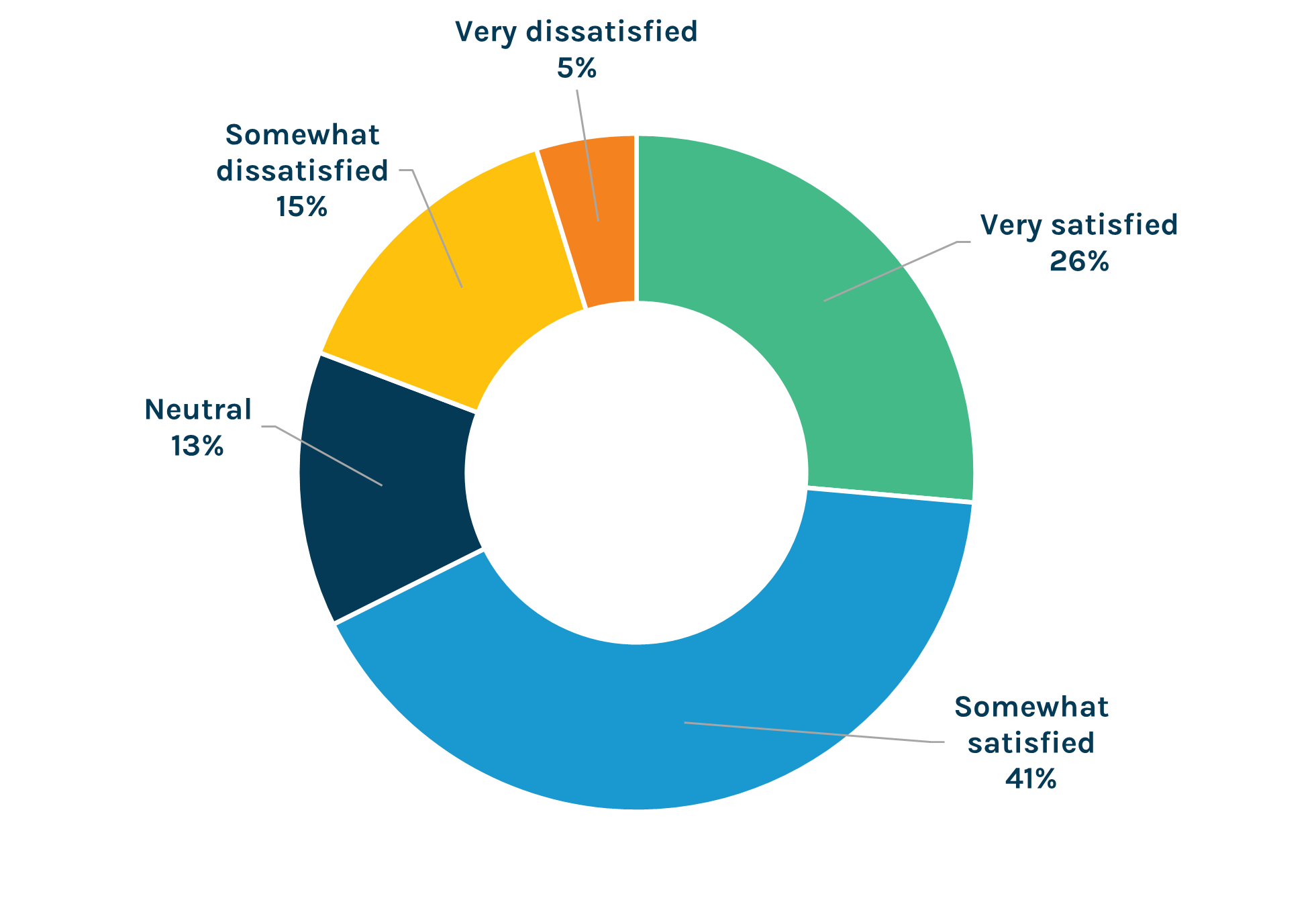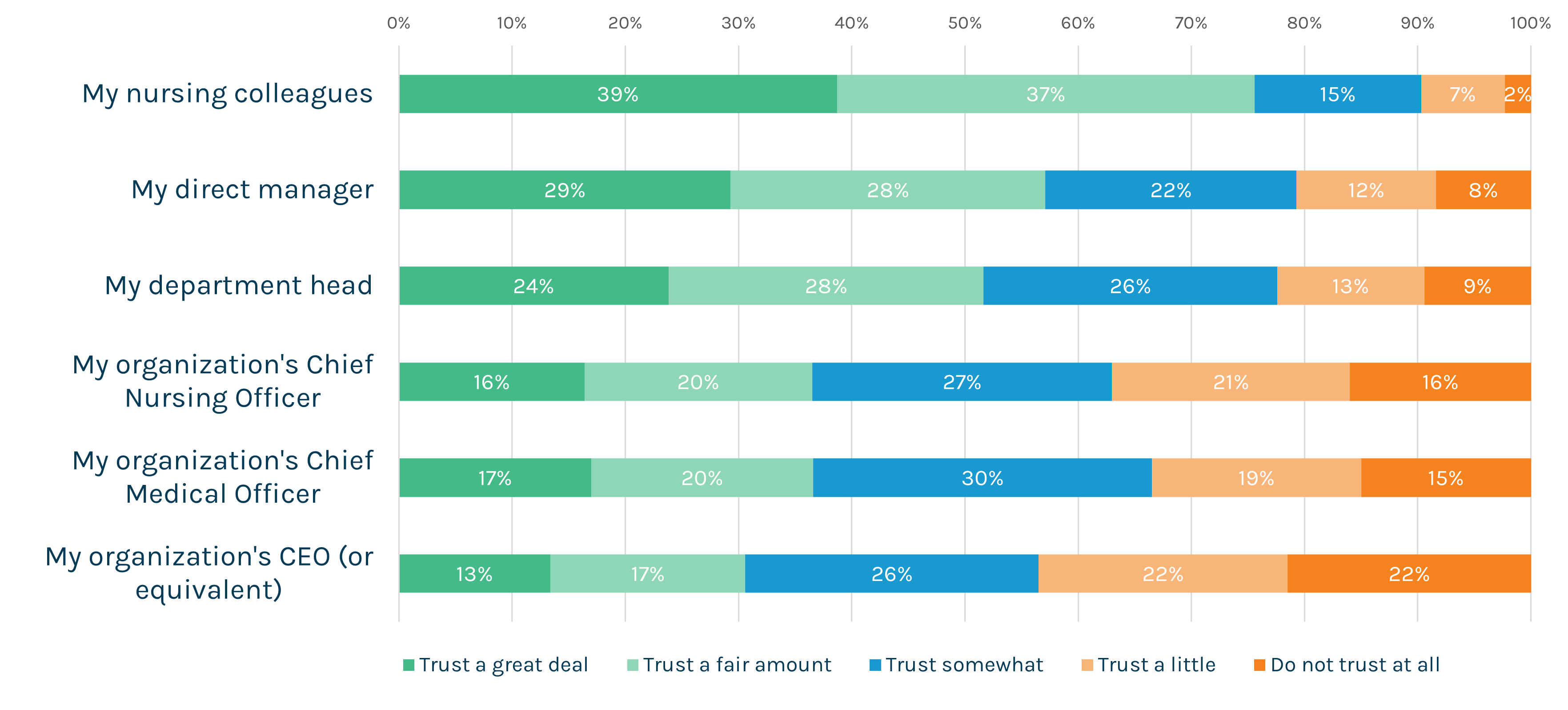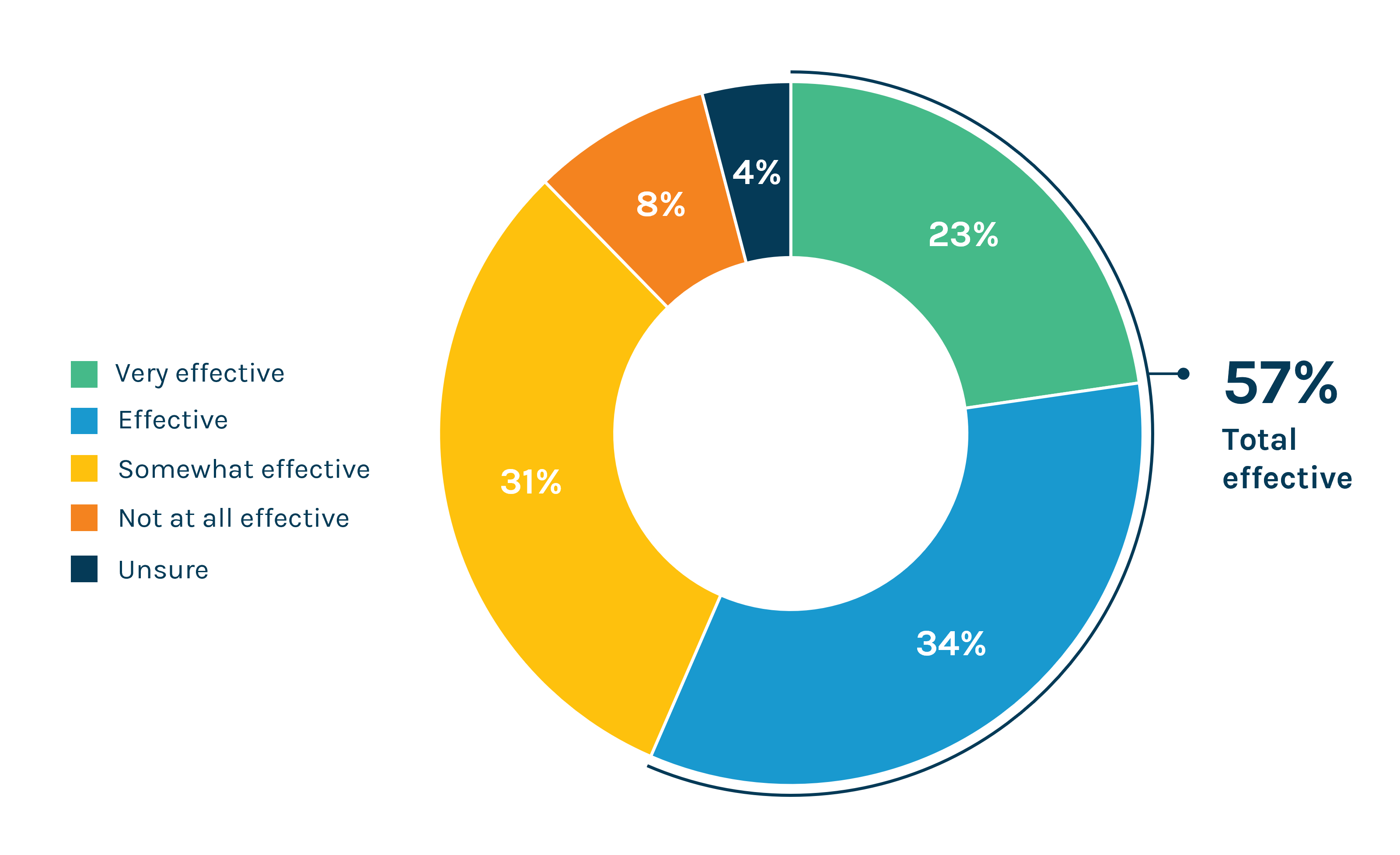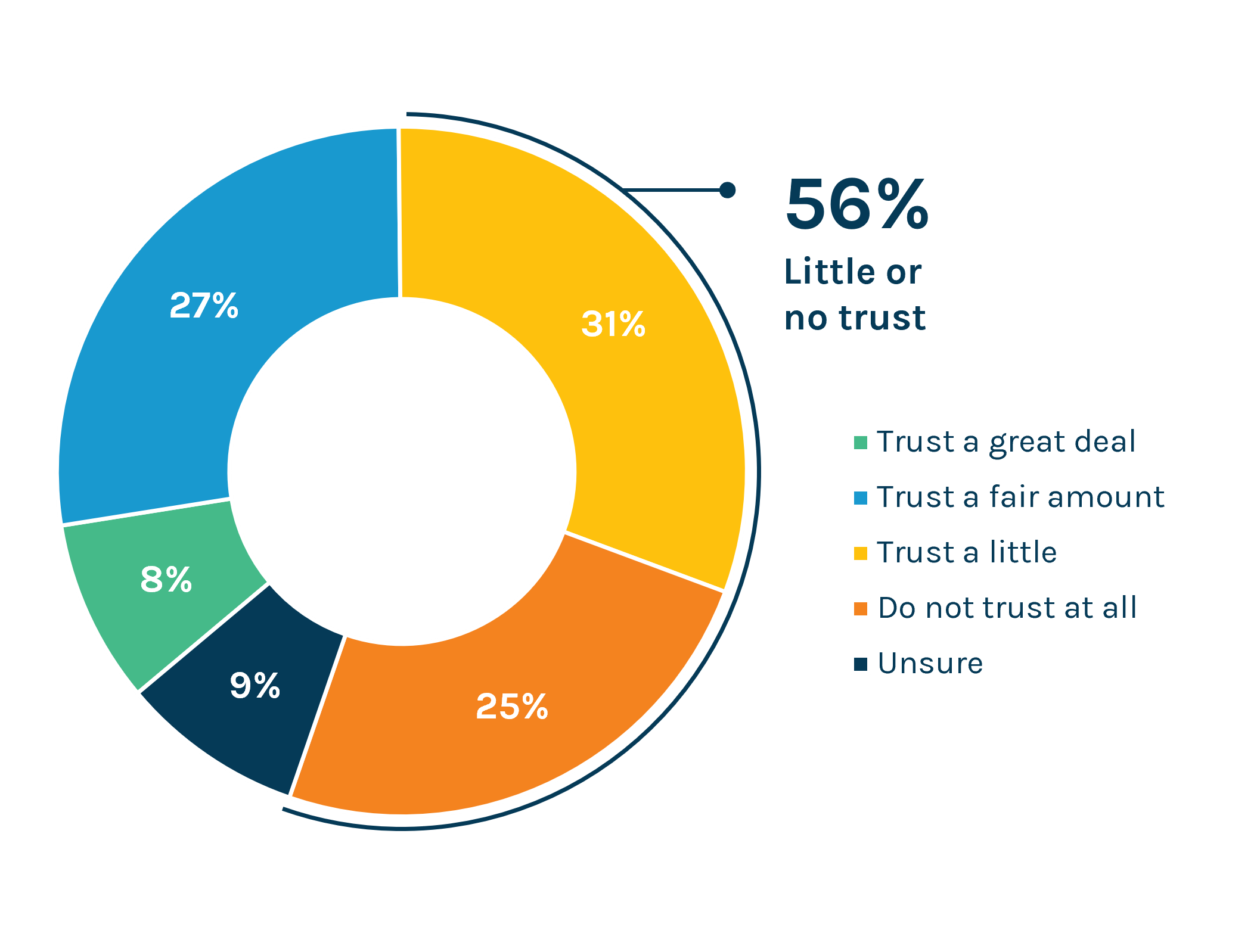The Big Story: The cost of nurse turnover
“Over the past three years, average nursing turnover rates nationwide have trended back toward 2019 levels. However, many health systems, hospitals and departments still have not returned to pre-pandemic turnover performance.”
From Crisis Band-Aids to Long-Term Solutions
By Isaac Squyres and Courtney Kelsey
2-minute read
The cost of engagement requires the most expensive thing you have – your time. Your attention. Your devotion to developing relationships.
In our latest annual national nurse survey, we unpack how best to spend your time (and to create time for leaders) to strengthen your organization’s mission-critical relationship with your nurses. Think of it as recommendations for your workforce investment strategy.
You know the dollars at stake. The numbers, of course, speak for themselves. The average cost to replace one full-time RN ranges from $51,000 to $72,000, according to a recent Chartis report. Retention pays.
There’s good news, though. Nurse turnover has improved since the pandemic. And satisfaction seems to have stabilized. But the highly applaudable efforts that got us here from the low points of the pandemic crisis – the unrelenting heroic efforts and the crippling burnout that ensued – won’t get us where we need to go today.
You should want a better ROI.
It takes more than crisis Band-Aids and immediate tactical changes to instill a sense of belonging in the long game of a career in nursing. Assuming you’re compensating nurses fairly and staffing your floors appropriately – belonging and being engaged as part of an important mission is what matters most.
Our third-annual nurse survey of 800 RNs goes into the weeds to identify what nurses are really concerned about today and what we need to do to be better. The strategies that they point to aren’t one-offs. They require time and deep communication. Healthcare is a big boat, after all. It takes time to turn. And inside that boat are plenty of points of contention.
Ask yourself: What’s more important than your clinicians?
Going from good to great – to borrow from Jim Collins’ signature workplace management oeuvre – means saying no to a lot of other things. The opportunity for you to have a gold-standard workforce is high. But it’s not a layup.
The survey’s core message? While there are encouraging signs, ongoing work is needed regarding trust, satisfaction, communications and technology. Translation: It’s time now to get off the safe plateau that’s been achieved post-pandemic and resume the climb to gain lasting, high-caliber engagement. The work is deep and strategic and requires renewed commitment and investments of leaders’ time and organizations’ budgets. Because, as a recent Harvard Business review article points out, “Managing the employee experience for maximum benefit requires leaders to know what employees are seeing, feeling, and wanting—and then respond judiciously.” And that knowing takes work.
One takeaway: Trust and loyalty are fragile.
We asked the nurses, how much loyalty they feel towards different people and groups within their organization. We also asked how much they trust the leaders of their organization on different measures.
Their responses indicated a high level of loyalty to their department. But just over half feel very loyal to their team lead or organization. And less than 40 percent express a great deal or fair amount of trust in executives and believe that their leaders are making good operational and financial decisions. Only a third have a great deal or fair amount of trust that executives are honest and transparent.
Reversing the power dynamic
Instilling that sense of belonging with the nursing staff isn’t the sole purview of the CEO or any other C-suiter who may round the halls for quick chats with the nursing staff. The CEO matters, but their role to play is setting improvement as a priority and allowing the space and time for proper engagement. As the graphic above shows, it’s the direct manager – the individual who’s most trusted – who’s best suited to authentically communicating and bringing the priority to life.
Want more? Here are four takeaways from our survey
This is what RNs said about satisfaction, trust, communications and technology. (Download the full survey report here.)
Job satisfaction is holding steady.
Survey Question: As a practicing healthcare worker, how satisfied are you with your job?
Response: Like the past two years, two thirds of nurses reported being satisfied with their job. More than three-quarters plan to stay in healthcare. Of those who’ve changed jobs, work schedule, pay and work/life balance are cited as the top reasons.

Trust and loyalty are fragile.
Survey Question: How much do you trust each of the following people or groups?
Response: Nurses express a high level of loyalty to their department, but just over half feel very loyal to their team lead or organization. Less than 40 percent express a great deal or fair amount of trust in executives and believe that their leaders are making good operational and financial decisions. Like last year’s survey, only a third have a great deal or fair amount of trust that executives are honest and transparent.

Internal engagement is weak, external communications better.
Survey Question: How effective are the communications tools and methods your organization use to provide you with information?
Response: More than half say that their organization’s tools and methods to communicate internally are effective. But less than half say that leadership teams engage nurses on strategic decisions or do a good job engaging them on issues that affect their work. Meanwhile, when it comes to the organization speaking out publicly on key issues, half say their leaders are thoughtful about it and speak out the right amount while more than a third want their organization to take more of a stand.

Technology is both a risk and opportunity
Survey Question: Thinking about the expanding use of artificial intelligence in healthcare, how much do you trust AI-enabled tools for administrative tasks?
Response: Nurses are highly skeptical about the use of AI in healthcare, but a slight majority express optimism about its potential. Overall, technology is viewed favorably, particularly because it has improved communications for nurses.

Parting words to leadership
Leveling up on trust and loyalty will require:
- Dedicating time to strategy. This entails mapping out a clear nurse engagement roadmap, allocating resources and establishing Take advantage of today’s planning season moment to dig into this priority.
- Establishing strong internal partnerships. Leadership from across the enterprise must work together to develop a comprehensive engagement strategy and a unified message to take to nurses, then work with those nurses to ensure plans match with their needs and expectations.
- Committing from the top. Success requires accountability for leaders at every level. But again, that doesn’t mean every executive must be in on every meeting. Instead, it’s about creating an environment where leaders at all levels can – and are expected to – take time to engage with nurses and staff, and to provide them the tools and training to do so. It’s about setting the culture so everyone can thrive.
Download the full survey report here. As always, contact us if you’d like to discuss the findings or set up a presentation for your team.
Contributors: David Shifrin, Emme Baxter, David Jarrard,
Image Credits: Katie Stephens, Shannon Threadgill




